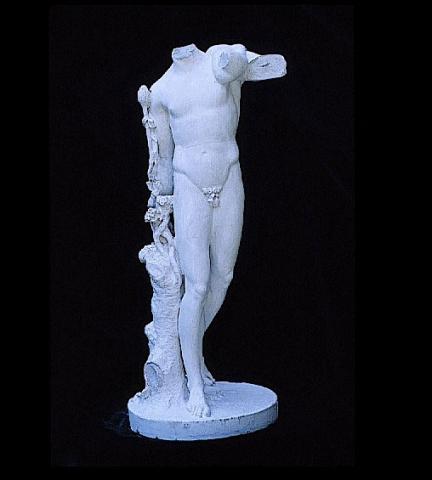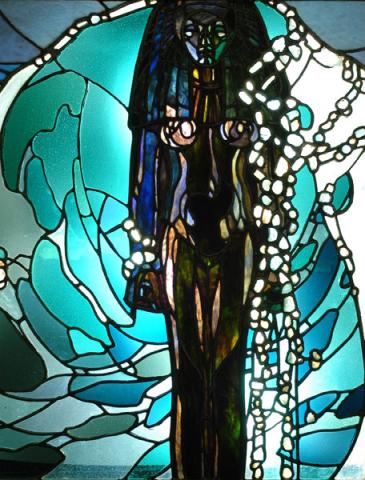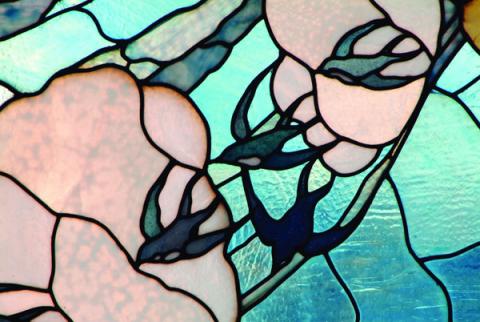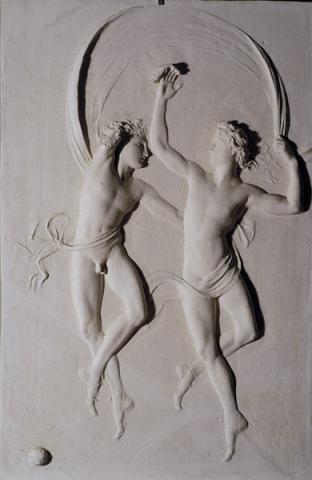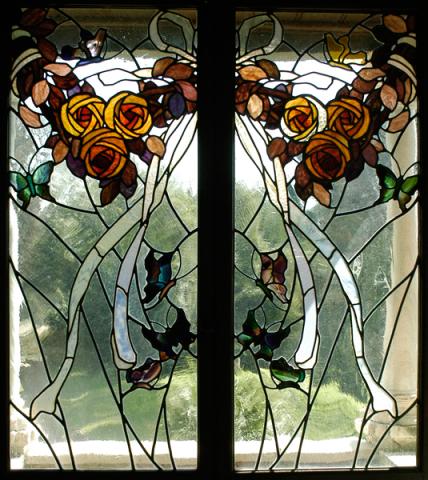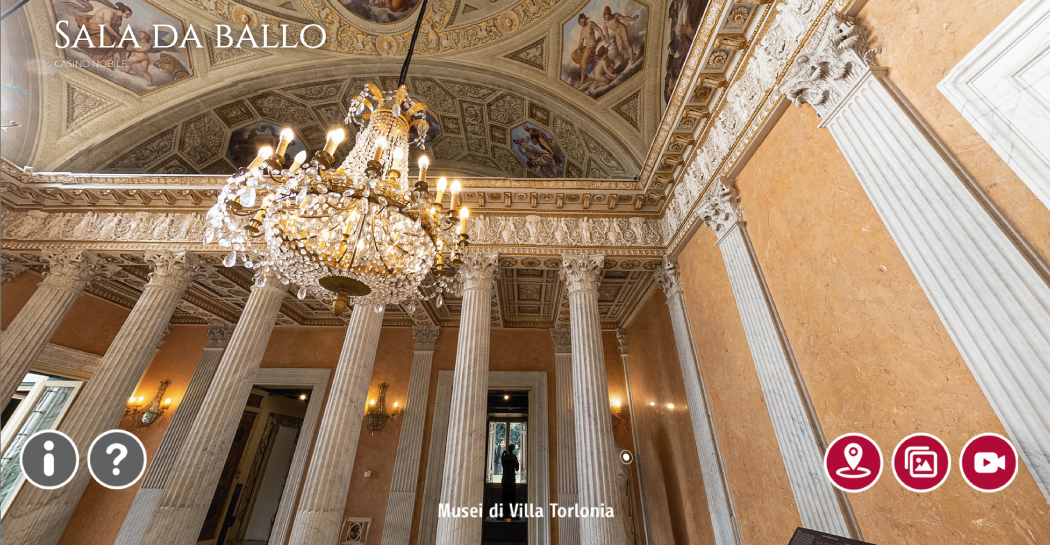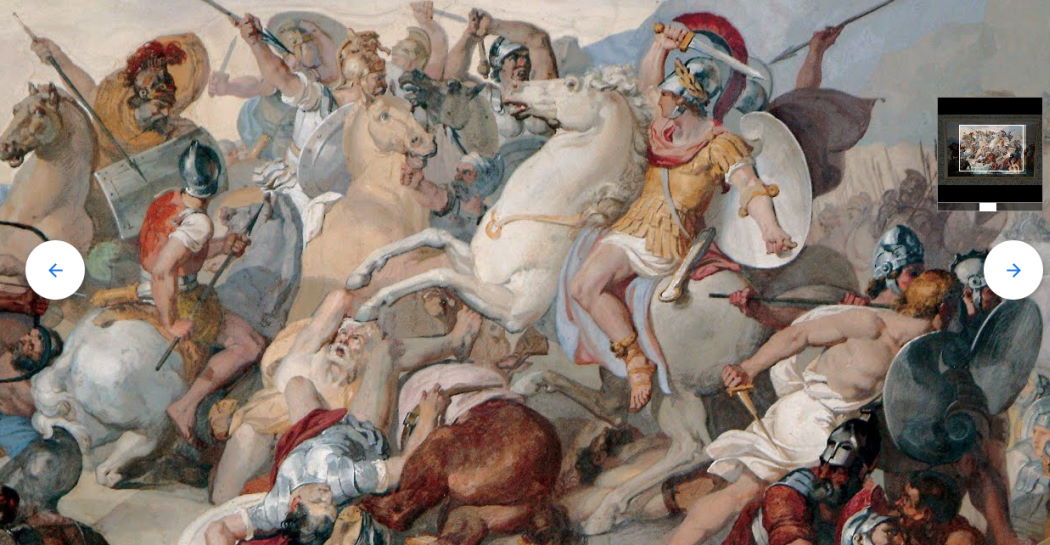The Balcony of the Roses
The narrow passage next to the Prince’s bedroom is articulated by a sequence of stained glass pieces designed by Paolo Paschetto and created by Cesare Picchiarini from the sketches displayed in the smoking room, with a composition of Roses, ribbons and butterflies.
The lively, sunny images created a distinct contrast to the bedroom’s gloomy atmosphere. The stained glass, created in 1920, repeats, in various different compositions, the motif of roses and butterflies, interwoven with ribbons; the warm, bright colours of the roses, in yellow, red and orange, give a lively contrast to the colder colours of the butterflies in green, purple and blue.
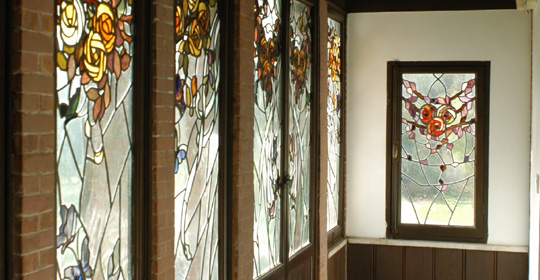
The decorative motif of the roses and ribbons is used in a loose graphic style, a freedom of composition and great softness in the drawing of the flowers and leaves.
The irregular spacing of the cold depths, over which the thick trains of the roses are laid in a continuous flow, animates the entire composition.
As they were creating the glass, the artist and the glass worker added some butterflies to the ensemble, which add to the fluid movement of the work.
The long balcony opens onto a small terrace. This is covered by a diminutive loggia held up by miniature columns made from coloured marble. The volutes of the elaborate capitals resemble stylised owl’s eyes.
The floor is made from agglomerate marble in the Venetian style and is decorated with comets, which, in conjunction with the rose motif that crowds the windows, is a reference to the heraldic arms of the Torlonia family.


























